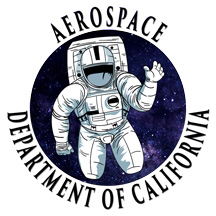
After World War II, there was another flurry of activity by the Aerospace Commission as we got into the Cold War, the Missile Race, and then the Space Race. And California was right in the middle of it. Pretty much every single Atlas Missile was made at Missile Park at Kearny Mesa in San Diego. Most of the prototype military airplanes were made in Palmdale, and tested at Edwards AFB. All of the Space Shuttles were made in Palmdale. The whole area from Vanderbilt AFB to North Island (the birth place of Naval Aviation) is filled with facilities for building the next generation of aircraft and space exploration, and in addition to the facilities, the people and companies behind that work are located there.
This is not just a matter of looking back at past accomplishments, but preparing the country for future needs, just as we have always strived to do so. China awarded 1.38 million engineering bachelor’s degrees in 2020, whereas the United States only graduated 144,000 in engineering and 54,000 in computer science. It is predicted that in as little as five years we could fall to third place in aerospace behind China and India. India is graduating about ten-thousand aerospace engineers each year, and the number of aeronautical aspirants is increasing by 4–6% every year.
The American aerospace workforce not only needs more trained people, but needs diversification for a number of reasons. The aerospace workforce has never reflected national demographics. There are two things needed for success, ability and opportunity. In inferior schools, located in poor communities, students are denied the means of gaining ability; in order to work in the aerospace industry, you either need a degree or previous training and experience, and most gain that training and experience through the military. Without a national program to prepare underrepresented groups to take the Armed Services Vocational Aptitude Battery (ASVAB), they are denied the ability to go to college by the education they received in substandard schools, and are denied the opportunity to serve in a technical field in the military because of low ASVAB scores. Thus, they have no entry point by which they can enter the workforce. Education and workforce are two traditional foundations of the American Legion.
There is so much more we could do; such as work with the American Legion resolutions to develop public policy in matters that relate to aerospace, and form coalitions with other aerospace advocates, just as Eddie Rickenbacker did to advocate aviation in the early years of the American Legion. The Department Aerospace Commission is looking for Advisors to represent every District in the Department of California. Make a difference, and talk with your District Commander about serving on the Aerospace Commission.
